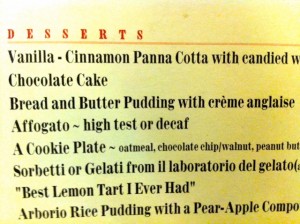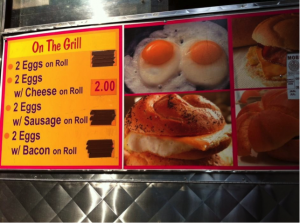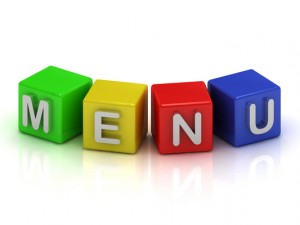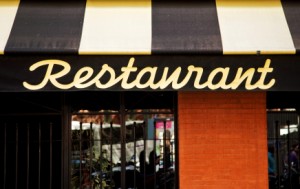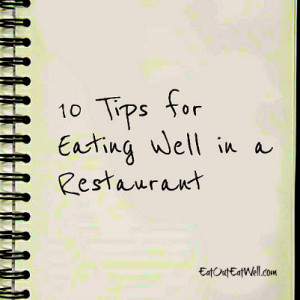 1. Prep before you go so you know what’s on the menu
1. Prep before you go so you know what’s on the menu
- Research the menu ahead of time either online or in person
- Choose a restaurant with an accommodating menu
- Learn the approximate calorie count of the dishes you order a lot
- Decide, before you go, what you’ll order and stick to your decision
2. Create your personal cheat sheet of red light and green light foods
- Understand what words and descriptions should raise red flags
- Recognize the value of broiled versus crispy – the trouble with stir-fry – and the true meaning of country-style
- Learn the best types of foods to choose in ethnic restaurants
3. What’s your plan?
- Will you have an appetizer or are you going to trade that for dessert? Will you have bread or a second glass of wine?
- Do your dinner companions always order a multi-course meal and expect you to do the same?
- What pitfalls might you face and how will you deal with them?
4. Pick – or ask for – a table in a quiet spot
- People who sit in the more distracting parts of restaurants (by a window, bar, or in front of a TV) eat more. A lot of swirling activity and noise makes it easy to lose track of how much you’re putting into your mouth.
5. Don’t be seduced by mouth-watering descriptions
- Be particularly aware of descriptions that use sensory terms like “velvety” cheesecake or nostalgic ones like “Grandma’s” lasagna
- Words that evoke taste, texture, or that appeal to emotions increase sales and influence the way you think the food tastes.
6. Be the first — or last — to order
- If you’ve decided to order grilled fish, when your friend orders a cheeseburger you might have second thoughts. To avoid temptation, order first. If you can’t, close your menu and commit to your choice.
- Order last if you’re asking for a lot of changes. After everyone else has ordered they’re not interested in listening to your requests. You might get better attention from the waiter with no other questions after yours.
7. Ask for what you want (nicely) – and avoid too many substitutions at peak times for the restaurant
- Ask for what you want … nicely
- Don’t expect your changes to be accommodated during very busy times
- Before ordering, ask questions like:
- How is it dish prepared; can it be grilled instead of fried?
- What are the sides with the meal; can I have a vegetable instead of pasta/rice/potato?
- Is it a big portion; can I get it in an appetizer size?
8. Choose meals that are served close to their original state
- Can you picture what your food was before it landed on your plate?
- Avoid food smothered in sauce, cheese, or butter
- Ask for sauces/dressings on the side so you are in control of the amount and can see what’s underneath
9. Be mindful of portion sizes and be aware of what’s on your fork and going into your mouth
- Overeating happens because of portion size, who you’re with, where you are, how things look, plate size, aroma, and distractions
- It’s easy to keep putting food in your mouth when it’s right in front of you – especially if you’re tired, bored, angry, or really starving.
- If you don’t like it, don’t eat it out of habit or courtesy
10. Have your own personal bag of tricks – and be ready to use them
- Sometimes a little white lie about why you’re not eating something is perfectly acceptable
- If you ask for substitutions or order off the menu, use explanations like “I need to eat heart healthy” or “I have a severe allergy”
- Give the food you don’t want to finish to someone else at the table
- If all else fails, after you’ve eaten what you want, make your food inedible by “accidentally” dumping salt or spilling water on it.
